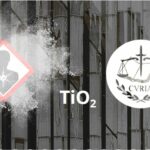
Defining nanos

Defining the term “nanos” – When the size defines the object
By the AVICENN team – last modification in November 2024
Nanoparticles, nano-objects, nanomaterials: the terms referring to the nano world are multiple, complex, but not always interchangeable! It is important not to confuse them. While some refer to the physicochemical characteristics of nanos, others are regulatory definitions that change depending on the sector and country.
Some important concepts
Nanoparticle < Nano-object ≠ Nanomaterial
A distinction is made between a “nanomaterial” (which has different scientific and regulatory definitions) and a “nano-object”, a material with one, two or three* dimensions at the nanometric scale.
*When they have three nanometric dimensions, nano-objects are considered “nanoparticles”
Primary particle, agglomerate and aggregate
Nano-objects tend to group together to form larger sets called aggregates and agglomerates.
Several definitions for nanomaterials
Coexistence of different regulatory definitions
At the international level, several definitions of nanomaterials co-exist with different criteria (ISO, OECD, Scenihr, SCCP, European Regulations, ACC, etc.)1See more details in the following publications:
– Comparative assessment of nanomaterial definitions and safety evaluation considerations, Boverhof DR et al, Regul Toxicol Pharmacol, 73(1):137-50, October 2015
– Fact sheet on the definition of nanomaterials, CIEL, ECOS, Öko-Institut e.V., November 2014
– Annex 2 “Review of existing nanomaterial definitions” of the report Evaluation des risques liés aux nanomatériaux – Enjeux et mise à jour des connaissances, ANSES, April 2014 (put online on May 15, 2014). As an example:
- The International Organization for Standardization ( ISO ) defines a nanomaterial2Cf. ISO/TS 80004-1, ISO, 2015 as “a material of which at least one external dimension is at the nanoscale or which has an internal or surface structure at the nanoscale” (the nanoscale being presented as “approximately” between 1 and 100 nm). It adopted the term NOAA to encompass all “Nano-Objects, their Agglomerates and Aggregates greater than 100 nm”.
- The European Commission’s 2022 definition recommendation is not legally binding, but it is intended to be included, like the 2011 recommendation it replaces as a recommendation, but that is still in place in several regulations at the European level (REACH , Biocides and Medical devices) and French (mandatory declaration R-nano).
It is more restrictive: unlike the ISO, it excludes internally structured nano- materials.
While waiting for the finalization of a Joint European Research Center (JRC) guide for the 2022 recommendation, it is possible to refer to the guide published in 2020, “the NanoDefine Methods Manual“. In this document, the JRC provided terminological and methodological clarifications for determining whether or not a material falls within the 2011 definition. Its inclusion in the Novel Foods Regulation was rejected in April 2024 by the European Parliament.
- The European regulation in the cosmetic sector has yet another specific definition: “an insoluble or biopersistent material, intentionally manufactured and characterized by one or more external dimensions, or internal structure, on a scale of 1 to 100 nm“3See the note published in July 2021 by the DGCCRF and the ANSM .This regulation is currently under review, with no certainty as to the definition that will be finally adopted4See our article “Towards a new nano definition in the future Cosmetics Regulation… yes but which one?”, VeilleNanos, July 2022.
- The European regulation in the food industry defines a nanomaterial as a “intentionally produced material having one or more dimensions of the order of 100 nm or less, or composed of discrete functional parts, either internally or on the surface, many of which have one or more dimensions of the order of 100 nm or less, including structures, agglomerates, or aggregates that may be larger than 100 nm but retain properties typical of the nanoscale“. (The European Commission meant to remplace it by its 2022 recommendation, but this endeavour was rejected by the European Parliament in April 2024).
What are the consequences?
The co-existence of different definitions complicates the work of producers / importers / distributors who must:
- declare their nanomaterials to the health authorities, as is the case in France (r-nano register) and in other European countries as well and at the EU level (Reach)
- label them differently depending on the sector of use (cosmetics, biocides, food).
Nevertheless, the problems related to the coexistence of different definitions ultimately concern mainly the ingredient suppliers. Indeed, when the characterization of the substances is done in a complete and adequate way upstream and transmitted correctly to the downstream stakeholders, these can use the definition appropriate to their sector and implement the necessary labeling and notification(s).
This situation could have been avoided if the project for a European register of nanomaterials with a harmonized definition at the Community level had not been hindered by the European Commission under pressure from industrial federations.
In the meantime, the temptation is great for many industrial groups to adopt avoidance strategies, with the use of nanomaterials whose size and distribution in number can flirt with the thresholds (with less than 50% of particles exceeding 100 nm for example) in order to escape the regulations while retaining the desired properties…
- Legal controversy over the definition of nanomaterials in European law,
- ANSES calls for the adoption of a more protective definition for nanomaterials, Anses, May 2023
- How to define a nanoform? EcoMundo, March 23, 2023
- Commission Recommendation of 10 June 2022 on the definition of nanomaterials (2022/C 229/01), 10 June 2022
- Scientific and technical support note on “the development of a proposal for an updated definition of the term “nanomaterials” based on Recommendation 2011/696/EU”, Anses, 14 January 2022
- Nanomaterials: for a more protective European definition, Anses, 23 July 2021
- Chemical substance: nanomaterial or not? LNE, May 2020
Any questions or comments? This information sheet compiled by AVICENN is intended to be completed and updated. Please feel free to contribute.
Other news on the topic
Upcoming Nano Agenda

- Webconference for analysis laboratories, plant fertilizer manufacturers and distributors, public authorities…
- Moderated by David Krupka, nanotechnologies development manager at AFNOR Normalisation and Emilie Langlois-Bertrand, nantechnologies standardization project manager.
- In partnership with Armand Masion, CNRS Research Director, and Sandrine Mocoeur, Health, Safety, Environment and Quality Manager at SYNGENTA.
- This exchange will also be an opportunity to explore the creation of a national platform to identify standardization needs.
- Website: www.afnor.org/evenement/nanotechnologies-agriculture-cadre-pratique-responsable/
- 8th Congress of Occupational Medicine and Health (CNMST 2026)
- Theme 5: Emerging pathologies and risks, Mr Henri Bastos (ANSES), Pr Lynda Bensefa-Colas (AP-HP), Dr Catherine Nisse (CHU Lille)
- Website: www.medecine-sante-travail.com
- 20th meeting of the “nano and health” dialogue committee
- Organizer: ANSES
This sheet was originally created in April 2011
Notes and references
- 1See more details in the following publications:
– Comparative assessment of nanomaterial definitions and safety evaluation considerations, Boverhof DR et al, Regul Toxicol Pharmacol, 73(1):137-50, October 2015
– Fact sheet on the definition of nanomaterials, CIEL, ECOS, Öko-Institut e.V., November 2014
– Annex 2 “Review of existing nanomaterial definitions” of the report Evaluation des risques liés aux nanomatériaux – Enjeux et mise à jour des connaissances, ANSES, April 2014 (put online on May 15, 2014) - 2Cf. ISO/TS 80004-1, ISO, 2015
- 3See the note published in July 2021 by the DGCCRF and the ANSM
- 4See our article “Towards a new nano definition in the future Cosmetics Regulation… yes but which one?”, VeilleNanos, July 2022



